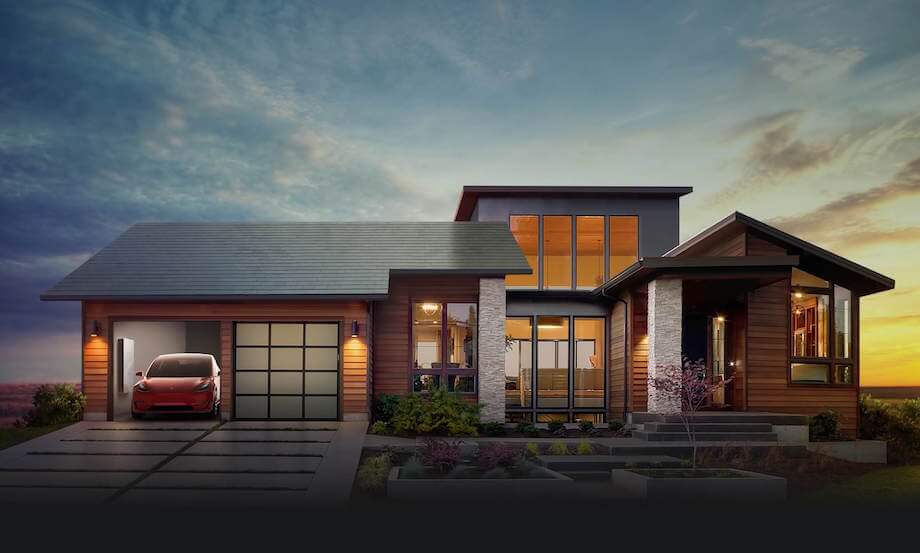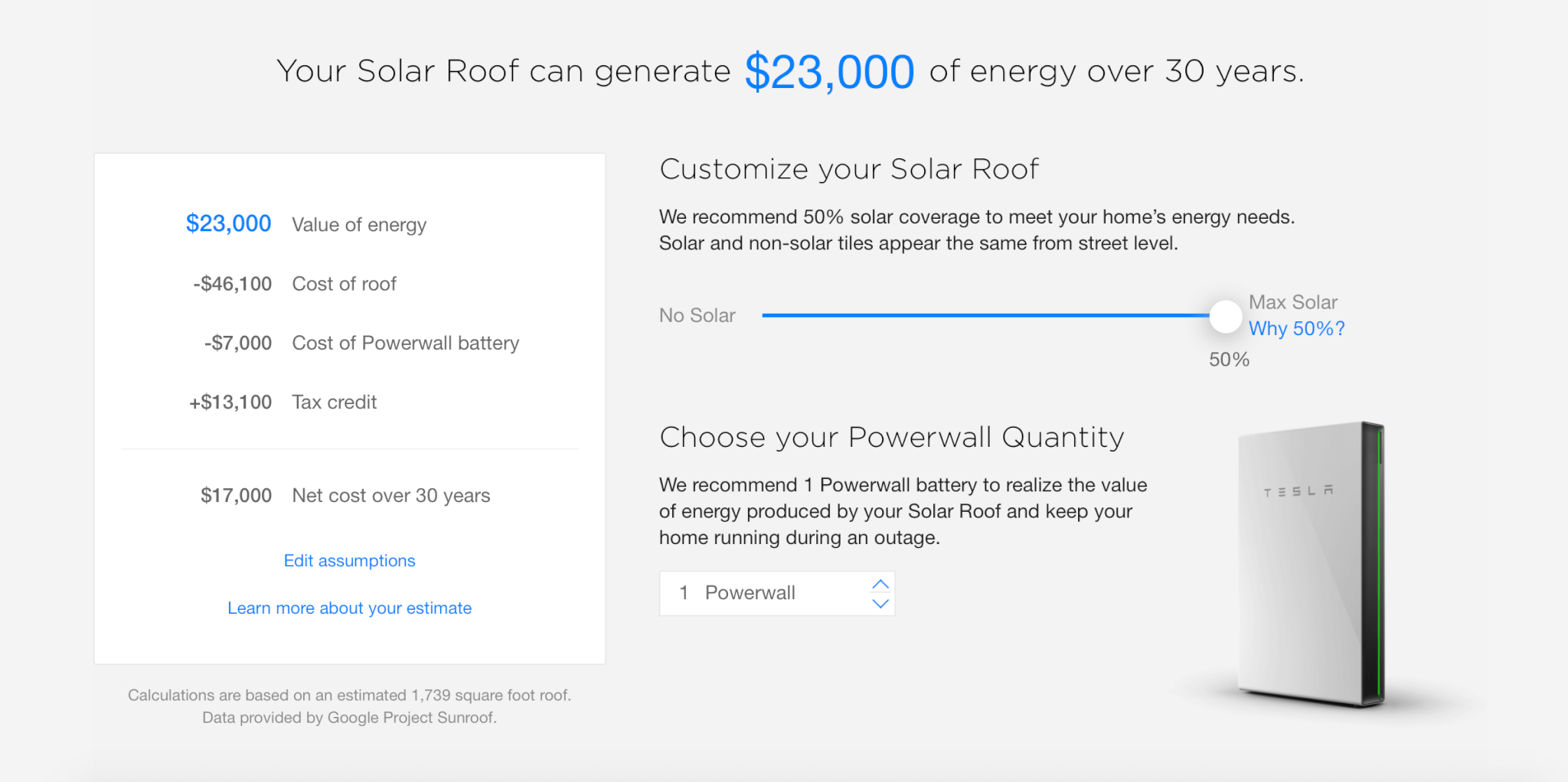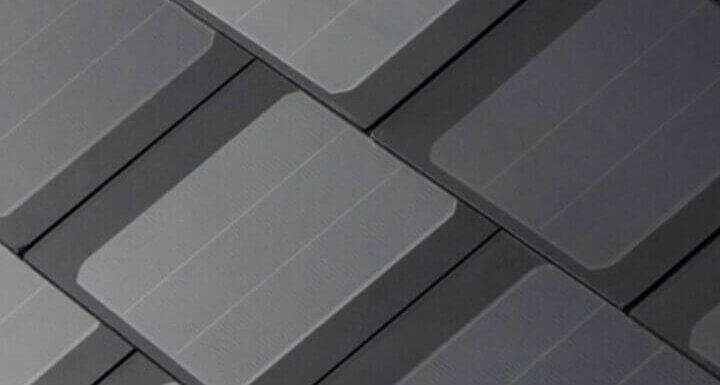
Tesla’s solar roofing tile is now available for pre-order. Should you go for it?
Ultimately, Tesla’s goal is for you to use their products to power your home with 100% clean and renewable energy. Tesla’s solar tiles work in tandem with their Powerwall battery pack to power your home and save you money in the long term.
Though Tesla didn’t invent the solar tile, they have revolutionized it. Other companies have marketed such a tile, but high component and installation costs have prevented the product from rising to the top of the clean energy discussion chamber.
Still, for the tile to be successful its cost must not exceed the value of the homeowner’s current energy costs, plus traditional roofing costs.
Tesla is banking on long-term energy savings, 100% clean energy integration, and aesthetics to sway the nay-sayers and curious to the buyer’s block.
It must take more than roofing tiles to make my home 100% clean energy efficient, right?
YES.
The solar roof will be integrated with Tesla’s Powerwall battery. The battery is designed to store energy to keep your home active day and night. Tesla’s latest Powerwall 2.0 battery comes with a 10-year warranty and a $5,500 price tag.
How Do The Tiles Work And What Do They Look Like?
When Musk unveiled the product last October, one of his main talking points was how aesthetically obtrusive current solar panel technology looks on our homes.
Tesla’s solar tile roof differs in that it is as an integrated feature of the structure itself (BIPV), rather than an addition to the structure it is affixed to (BAPV). As a building-integrated photovoltaic product, when the tiles are installed they will create the appearance of a normal roof, hiding the fact they are a massive solar panel.
The tiles themselves are constructed of three layers:
- The tile’s high efficiency solar cell is what captures the sun’s energy. On Tesla’s website, they claim that the cell produces more energy even at high temperatures.
- The second layer is the color louver film. This film allows the sun’s rays to enter the tile’s cell while at the same time hiding the cell from vision at street level. In other words, you’ll only see a tile from the street and not the reflection of the cell inside of it.
- The unit’s tempered glass veneer will not block the sun’s rays and will rival, if not exceed, the strength of any other roofing tile on the open market, solar capable or not. If you want evidence of how durable the glass tile is, watch the video on Tesla’s website about 13:00 minutes in.
Tile Designs
Tesla unveiled four unique designs.




How Much Will They Cost?
A Tesla solar roof on an average-sized house, with a 1,700 square foot roof, is priced about $50,000. You can price out your own house on their page—data from Google Maps gives them the size of your roof.

Tesla’s site also breaks down your cost over time.
Is It Worth It?
In Barry Cinnamon’s greentechmedia.com article, he explains a ton of useful information about solar panel energy and how Telsa’s tile must perform to compete.
- An average home solar panel system should be a 6-kilowatt system
- Tesla’s High efficiency tiles will probably generate 6-watts per tile
- 1,000 6-watt tiles will create a 6-kilowatt system
- Because of varying factors such as shade, fire codes, northern slope, etc. all roofs can expect to hold dummy tiles along with solar tiles. Dummy tiles in theory should be cheaper in price.
- It’s unlikely that the tiles will be installed individually and more likely in 24 cell units. This will lessen the amount of wire work and installation time required.
- The average 6-kilowatt system uses about 9000 kilowatt hours per year.
- Considering the above averages, plus the average annual electricity cost of a home, the system could easily save you $2,250 a year.
Mr. Cinnamon’s inquiry appears to be a fair one, but there’s still many unknowns about the product encouraging all to wait until the numbers are in to pass judgement.
A more well-rounded theory comes to us from Consumer Reports, who conjured up a helpful article to gauge the cost-benefit of the Tesla roof. If that’s something that interests you, click here for the link. They considered Tesla’s claim that the lifespan of the tile is 30 years, using this information they came up with the figures below based on a 3,000-square foot roof.
- A normal asphalt roof will cost $20,000
- The average annual energy cost of a family home (this is a big approximate considering the variables) is $2000 a year.
- If the tiles last 30 years, we can expect the roof to save the home $60,000 in energy costs.
- Each Powerwall battery is warrantied for 10 years at $5,500 a piece. That’s 16,500 within a 30-year span, depending on the life of the battery pack.
- In sum, depending on the tile, you can expect to spend between $69,000-$100,000 for your Telsa solar roof if they want to compete with price.
- Within 30 years, a home could expect to replace their asphalt roof twice and spend $2000 a year on energy. This totals approximately $100,000 in costs.
As it turns out, the price Tesla has set is well below what analysts were expecting.
What this all comes down to is how much you can pay up front. $50K is a lot of money to pay up immediately as an investment, but for some the idea of energy independence and the environmental factor makes the investment worth the price.
There’s no doubt that this product is a game changer and a step in the right direction for renewable and efficient clean energy. However, it’s still for lack of a better term, a luxury product. With that said, I doubt it’s Tesla’s prerogative to keep it that way for long.
Tesla’s solar tile is likely a giant first step in a market that will continue to expand and compete. It’s our hope that prices drop and within a decade, if not less, the dream of 100% energy efficiency can be realized by all, and not the few.
Josef Olson works in Seattle as a carpenter and keeps busy off the clock with an assortment of DIY projects.










































Leave a Reply